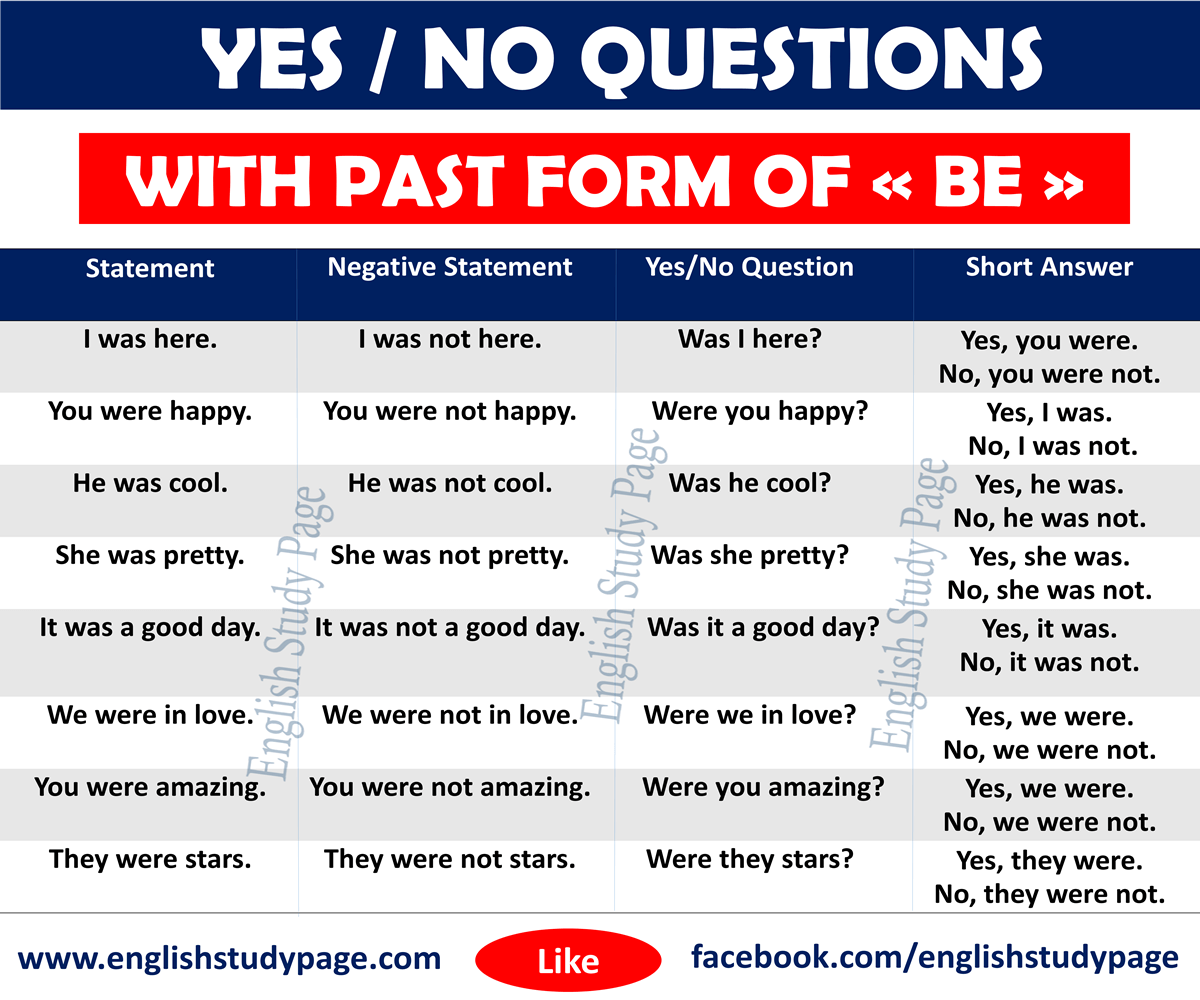TYPES OF QUESTIONS
In English, there are two main types of questions which are;
- Yes / No Questions
- Wh – Questions

YES / NO QUESTIONS
Yes / No questions are the questions which are answered yes or no. It means when we are asking yes/no questions, we are expecting the answer, yes or no.
To form Yes/No questions, we use one of these verbs: auxiliary verbs ( be, do and have ) or modal verbs ( can, may,etc.).
We can not use questions words like what, how, why, who, etc. whilw making Yes/No questions.
FORMING YES/NO QUESTIONS
Yes / No questions are made, using the verb (am, is, are, was, were, have, had, do, does, did, can, will, should etc.) at the beginning of a sentence. Namely, subject and verb change their position in statement and question.
With An Auxiliary Verb ( “Be” or “Do” or “Have” ) or Modal Verb
With ” To Be”
The verb “ To Be ” has three forms in the present; am, is and are.
The verb “ To Be ” has two forms in the past; was and were.
| Subject | Present Form “Be” | Past Form “Be” |
| I | am | was |
| He, She, It | is | was |
| We, You, They | are | were |
Rules:
1. If the main verb of the sentence is “to be”, question form is
Be ( am, is, are, was, were ) + Subject + ….
| Sentence | Question |
| I am a doctor. | Am I a doctor? |
| He is from England. | Is he from England? |
| We are happy. | Are we happy? |
| She was ready. | Was she ready? |
| They were the same. | Were they the same? |
2. If the sentence has a main verb and an auxiliary verb “to be”, question form is
Be ( as an auxiliary verb ) + Subject + Main Verb + ….
| Sentence | Question |
| I am studying English. | Am I studying English? |
| He is watching television. | Is he watching television? |
| We are working in the office. | Are we working in the office? |
| She was waiting at the bus stop. | Was she waiting at the bus stop? |
| They were coming to take me away. | Were they coming to take me away? |
ATTENTION:
When there is more than one auxiliary verb in a sentence (especially in passive voice ), we put first auxiliary verb at the beginning of a sentence, the other(s) comes after the subject. In this case,
Question Form is;
Auxiliary Verb + Subject + Auxiliary Verb + Main Verb + ….
| Sentence | Question |
| The conversation was being recorded. | Was the conversation being recorded? |
| The car had already been parked when we arrived. | Had the car already been parked when we arrived? |
| The window are being broken. | Are the window being broken? |
3. If we want to make a negative yes/no question with”to be”, question form is
Be ( am, is, are, was, were ) + NOT + Subject + ….
| Sentence | Question |
| He is not ( isn’t ) a student. | Isn’t he a student? |
| You are not ( aren’t ) going to swim. | Aren’t you going to swim? |
| That was not ( wasn’t ) my car. | Wasn’t that your car? |
| They were not ( weren’t ) listening to the music. | Weren’t they listening to the music? |
| The book was not ( wasn’t ) given to me. | Wasn’t the book given to me? |
4. When we are replying the question, we can use short or long form for the answer. Answer forms are;
Yes + Subject + Auxiliary Verb ( + … )
No + Subject + Auxiliary Verb + Not ( + …. )
| Question | Answer ( Short -Long ) |
| Am I sympathetic? | Yes. / Yes, you are. / Yes, you are sympathetic. |
| Is she coming? | No. / No, she isn’t. / No, she isn’t coming. |
| Are they married? | Yes. / Yes, they are. / Yes, they are married. |
| Was he nervous? | No. / No, he wasn’t. / No, he wasn’t nervous. |
| Were you visiting your family? | Yes. / Yes, we were. / Yes, we were visiting our family. |
| Has the statue been painted? | No. / No, it hasn’t. / No, it hasn’t been painted. |
( generally short form is used as an answer )
YES/NO QUESTIONS WITH PRESENT FORM OF ” BE ( AM/IS/ARE ) “

YES/NO QUESTIONS WITH PAST FORM OF ” BE ( WAS/WERE ) “

